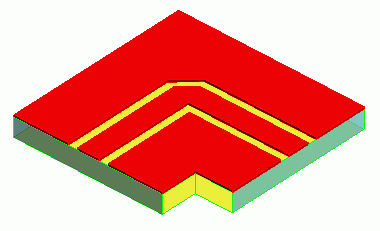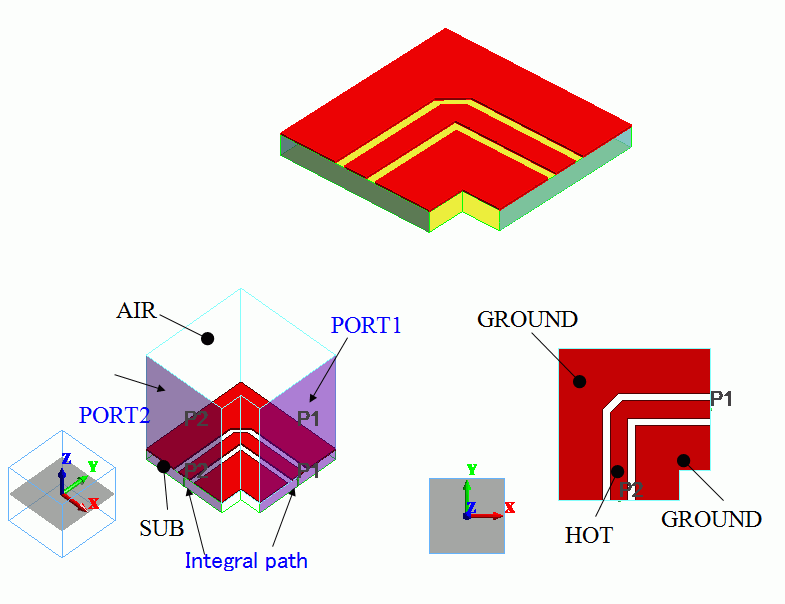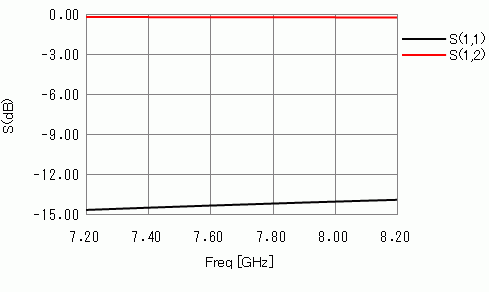
CAE Software【Femtet】Murata Software Co., Ltd.

Example9 Coplanar Waveguide with Bend

General
-
A coplanar waveguide with bend is analyzed.
-
Unless specified in the list below, the default conditions will be applied.
-
[How to Reduce the Calculation Time]
Analysis Space
|
Item |
Settings |
|
Analysis Space |
3D |
|
Model unit |
mm |
Analysis Conditions
|
Item |
Settings |
|
Solvers |
Electromagnetic Analysis [Hertz] |
|
Analysis Type |
Harmonic analysis |
|
Options |
Select “Ignore the influence of face/edge electrode thickness” * |
* This is the default setting. There are no face electrodes with this model. Therefore it is irrelevant to select it or not.
Mesh tab, Harmonic analysis tab and Open boundary tab are set as follows.
|
Tab |
Setting Item |
Settings |
|
Mesh Tab |
Element type |
2nd-order element |
|
Multigrid/Adaptive Mesh Method |
Select “Use the adaptive mesh method”. |
|
|
Frequency-Dependent Meshing |
Reference frequency: 8×10^9[Hz] Select “The conductor bodies thicker than the skin depth constitute the boundary condition.”
As Hot and GROUND are thicker than the skin depth, the surfaces are applied with the boundary condition having some loss. |
|
|
Harmonic analysis |
Frequency |
Minimum: 7.2×10^9[Hz] Maximum: 8.2×10^9[Hz] |
|
Sweep Type |
Select Linear step Division number: 10 |
|
|
Sweep Setting |
Select Discrete sweep |
|
|
Open boundary |
Type |
Absorbing boundary |
|
Order of Absorbing Boundary |
1st degree |
* Fast sweep is avoided for higher accuracy. The number of frequencies is relatively low, so the calculation will not take long.
Model
Coplanar waveguide is formed on a alumina substrate. Electrodes of waveguide are solid bodies.
The outer boundary condition is “Electric wall”.

Body Attributes and Materials
|
Body Number/Type |
Body Attribute Name |
Material Name |
|
4/Solid |
AIR |
000_Air(*) |
|
5/Solid |
SUB |
001_Alumina |
|
13/Solid |
HOT |
003_Ag * |
|
24/Solid |
GROUND |
003_Ag * |
|
26/Solid |
GROUND |
003_Ag * |
* Available from the Material DB
Boundary Conditions
|
Boundary Condition Name/Topology |
Tab |
Boundary Condition Type |
Settings |
|
PORT1/Face |
Electric |
I/O Port |
Reference Impedance: Select “Specify” and enter 50 ohms. Number of precalculated modes: 5 Number of modes used in the actual analysis: 1 Select modes: none |
|
PORT2/Face |
Electric |
I/O Port |
Same as above. |
|
Outer Boundary Condition |
Electric |
Electric wall |
|
Results


